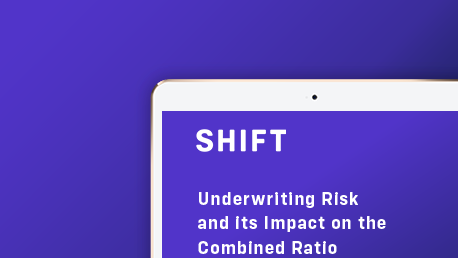Insurance underwriters are mature in the use of data and analytics to continuously improve how they manage rate vs. risk. However, underwriting losses of $21.6B last year* highlight underwriting still contains a high degree of uncertainty. The unforeseen exposures are often attributed to inflation, legislation and, of course, pesky mother nature. However, what about fraud? Can fraudulent policy activity be prevented to help improve underwriting performance?
Shades of Fraud
Fraud is a malicious word as it suggests the intent to do harm. A quick search yields “deceit” and “trickery” as synonyms. There are really two types of fraud, criminal with malicious intent and misrepresentation - those little white lies.
In insurance terms, misrepresentation could be viewed as deceitful, or an innocent oversight. Is the car used for a small business? Do the teenagers in the house sometimes use the car to drive to school? Did grandma let the student have her car to use at college? Whether these examples are left out of a policy intentionally or not fully understood is where the shades of fraud become less clear. Yet, when lower premiums are paid than that prescribed by the coverage provided, there is a monetary value realized by the policyholder as a result of the false information - aka, fraud. This ultimately affects the loss results of an insurer.
While misrepresentation fraud may be innocent, intentional policy fraud is something that insurers cannot tolerate as they fight to get losses under control. As an example, insurers are under attack by digital fraudsters seeking to capitalize on the anonymity of online applications. TransUnion reported a 159% increase in digital fraud attempts** in the insurance industry. This is in stark contrast to other industries. Networks of policy fraud, executed and coordinated at scale across individuals and/or providers, magnifies the potential for these types of losses.
The challenge is that given the competitive insurance environment, especially in the direct to consumer space with aggregators and automated, instantaneous quotes, decisions must be made much more quickly. Once within the pre-look period, there is an opportunity to assess risk more adequately but with the high volumes and the need for growth, efficient underwriting is critical.
Stopping Fraud at the Door
Underwriters are the front line defense for an insurer. Claims are a part of doing business for an insurer, and while fraudulent claims are a reality, the goal is to prevent them from happening at all. Therefore, fraud is not owned by claims alone, but is best addressed up front in the underwriting world. Enabling underwriters to better identify the potential for fraud is a proactive approach to improving the loss ratio. In practice, underwriters have little time to spend researching the suspicion of fraud. Tools that can assist in better decision-making are needed to focus their time and resources effectively.
Modern approaches to data, analytics and AI enable underwriters to be more efficient in their fraud detection by highlighting questionable circumstances earlier. A variety of approaches are available to help in this endeavor. Identity resolution can help to spot a potential identity theft. Network analysis can identify connections between entities nearly impossible to find manually. And if there is suspicion of misrepresentation, underwriters can use this data to facilitate a positive, proactive inquiry to better define the exposure. This type of consultation with a client promotes a better customer experience than challenging a claim later that suggests grandma was not the one driving the car on campus.
Real World Examples of Policy Fraud
This ebook provides several examples of various types of policy fraud from misrepresentation to fraudulent brokers. In each case, advanced AI was used to identify and enable research to stop the nefarious activities.
Shift was recently cited by CNBC and Statista on The world's top 150 insurtech companies 2024 for Underwriting. To learn more about how AI is helping underwriters, access the ebook.
*Insurancebusinessmag.com
**TransUnion Quarterly Fraud Report
About the Author
Subject Matter Expert - Underwriting, Shift Technology


